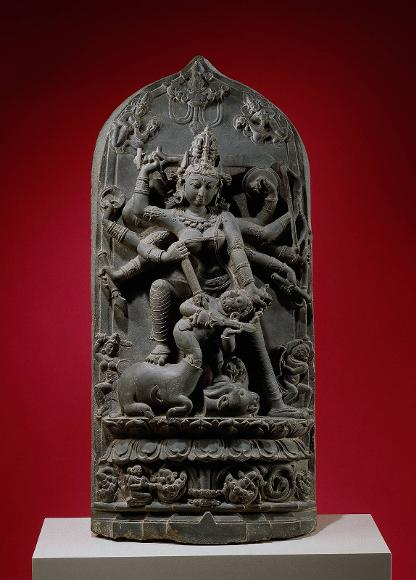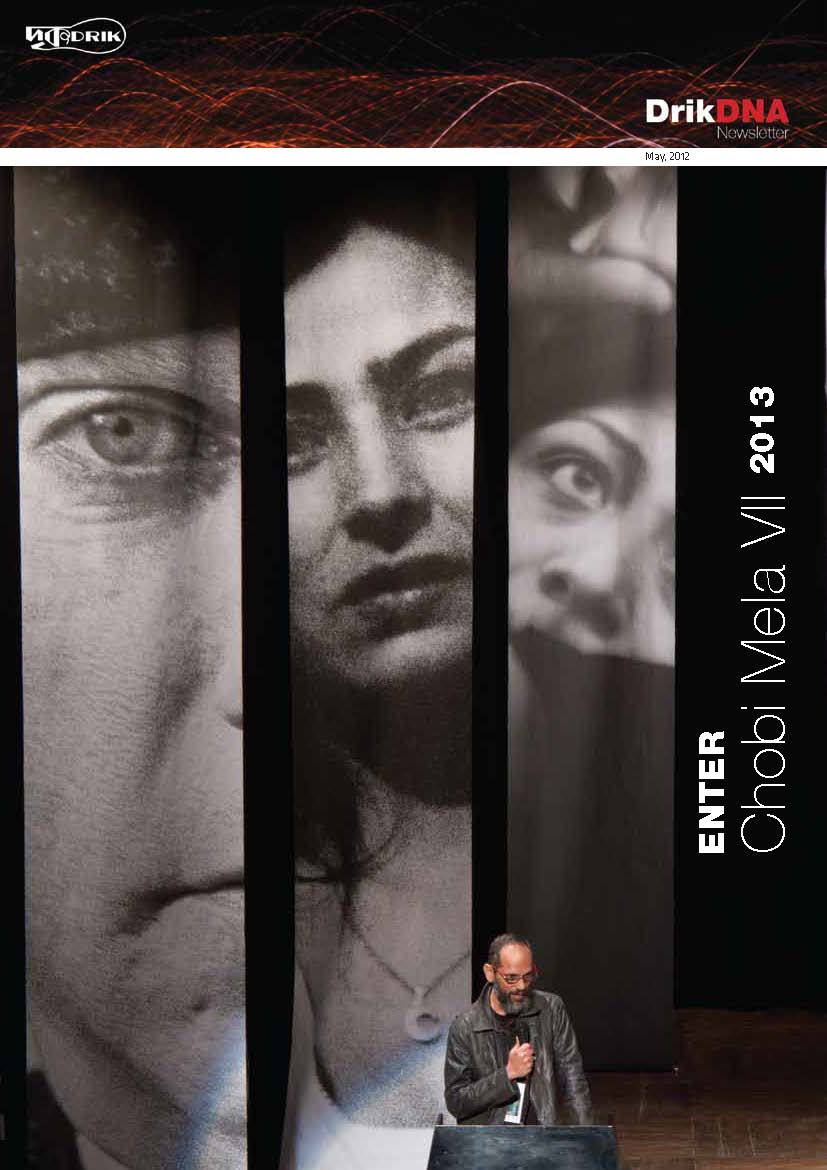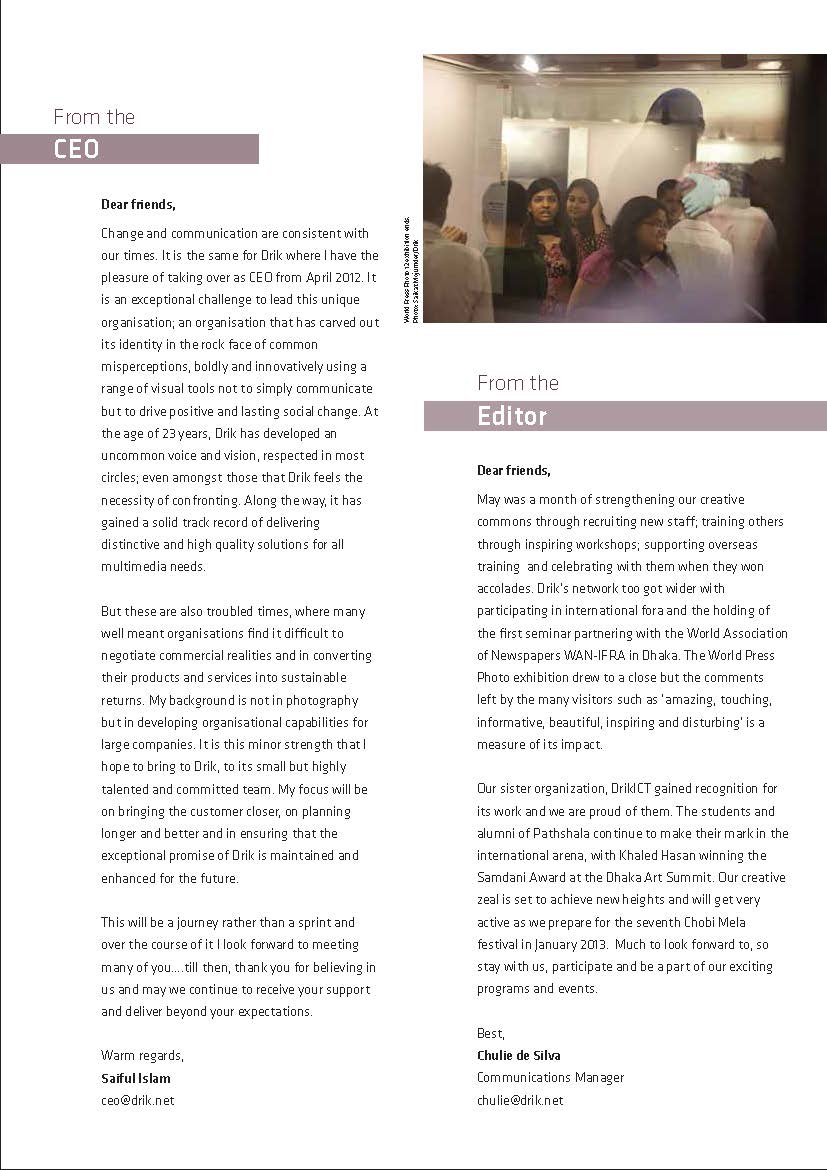
The website of the Rijksmuseum shows the statue of a late 11th or early 12th century Durga, a Hindu goddess, killing a buffalo demon (1). It is one of the thousand masterpieces of the museum, and comes from Bangladesh. At the bottom of the invoice of the Peter Marks Gallery in New York, where the museum purchased the statue in 1992 for USD 65,000, it says: ‘Ex Collection: David Nalin’. drs Jos van Beurden, interviewed here by Shahidul Alam, informed the museum that it was possible that the statue was exported illegally after 1970 from Bangladesh and they answered: ‘Nice to know,’. Jos says ‘I trust that the Rijksmuseum acted in good faith, when it purchased this masterpiece, although Bangladesh’s instability of the early 1970’s and its impact on provenances should be general knowledge for insiders. The question is, whether the museum should reinvestigate its acquisition with this new information.’
Tag: netherlands
DNA Drik Newsletter May 2012
Drik’s regular newsletter. Edited by Chulie de Silva
I am going to Die on Monday at 6 15 pm
Subscribe to ShahidulNews

When Marc Weide’s mother who was 65 was diagnosed with terminal cancer, she chose euthanasia. Here, we publish his shockingly frank diary of her final days
Monday February 11 2008
5.30pm: Dad is bent over the toilet bowl with a brush in his hand and a scowl on his face. I walk up to him. “Shall I give you a hand?” Dad begins to snicker, abandoning any attempt to make sense of the situation. We stand shoulder to shoulder with our backs to Mom, who paces around the patio with a newly fitted catheter in her hand.
The catheter has been put in by her nurse, Marianne to enable her doctor, who will be with us in half an hour, to give Mom a lethal injection. But instead of having a moment of peace with us, as Marianne suggested, Mom demands that we clean the toilets. Both upstairs and downstairs.
My brother, Maarten, is sitting on the edge of the bathtub, staring out of the bathroom window.
“Imagine,” he mutters. “Her last hour, spent like this.”
This is the Netherlands, where voluntary euthanasia is permitted, as well as physician-assisted suicide. This is the day my mother has chosen to die, and the toilets need to be spotless.
Three months earlier
I’m on a writer’s retreat in the UK, where I have been living for the past three years. I’m working on my novel when my mobile phone rings. The display shows it’s Maarten, calling from the Netherlands. Mom’s test results have come back.
“It’s secondary cancer in her lungs.” He pauses. “They think she’s got two to six months left.”
Continue reading “I am going to Die on Monday at 6 15 pm”


